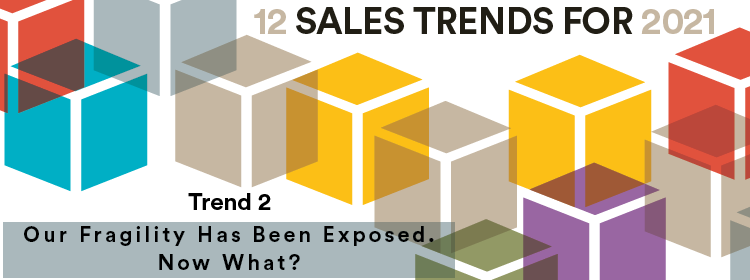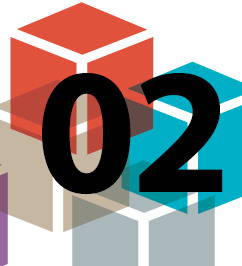
Sales trend 2 from the 12 Sales Trends for 2021 Report is about what Procurement can do to help businesses become thrivers and survivors.
By guest author Ben Shute, CEO of Comprara
 For Barrett’s 12 Sales Trends Report last year, my article – We change, or we burn – argued that the Bronze Age collapse was a warning we should heed. Due to the complex logistical nature of the procurement process behind the production of bronze, the world of the Bronze Age was highly interconnected and interdependent. A drought in the Indus Valley, for instance, could – and did – bring down the Mycenaeans far, far to the west.
For Barrett’s 12 Sales Trends Report last year, my article – We change, or we burn – argued that the Bronze Age collapse was a warning we should heed. Due to the complex logistical nature of the procurement process behind the production of bronze, the world of the Bronze Age was highly interconnected and interdependent. A drought in the Indus Valley, for instance, could – and did – bring down the Mycenaeans far, far to the west.
When I wrote that piece, COVID-19 was not on my radar. Today, though, the global pandemic has painfully exposed the fragility of our interconnected world. The Iron Age followed the Bronze Age, largely because iron was easier to procure. So, what’s going to be our iron?
As the majority of the old established civilisations collapsed along with the bronze trade, new groups, who had not yet put down roots, adapted to the new world and thrived. Today, the pandemic has claimed many established businesses and industries, and new ones will rise in their place.
How do we become the thrivers and survivors?
Smart procurement. Life is a series of procurement puzzles, and those who solve the puzzles first – or most efficiently – will thrive on the other side of COVID-19.
Simplify and Excel
Iron followed bronze. The newcomer had advantages and disadvantages over its predecessor. Iron is plentiful, which is one of the main reasons why it ‘won’ history and is still used in huge quantities today. It’s also easier to obtain, with a simpler logistics chain. To make bronze, you need to source tin and copper. Iron only requires iron ore. Of course, both metals need infrastructure and fuel in their production.
COVID-19 is demonstrating today what the Mycenaeans realised over 3000 years ago: offshoring makes you vulnerable. We need greater insight into our supply chains so we can better anticipate disruptions and organise alternate suppliers, which means we need greater transparency. There needs to be greater investment in technology that helps us manage supplier relationships so we know better who we’re dealing with and what the risks are. Onshore sourcing will be the answer to some of these risks.
Don’t get me wrong: the savings of offshoring are not going to disappear. Indeed, many are predicting that we might see more offshoring in the coming decades as office work is shifted overseas, now that managers have seen their workers operate from anywhere. However, innovations such as 3D printing and improvements to automation may well see the return of manufacturing to Australia.
We may well be closer to the on-demand manufacturing of the pull economy that I spoke of in my 2020 Sales Trend article. Imagine for a moment that your phone doesn’t exist until you order it, and it doesn’t get manufactured overseas, but around the corner. You may even stroll around to the local workshop to pick it up.
I say ‘imagine’ because that level of localisation is still a pipedream. Technology has a long way to go before small-scale manufacturing overcomes the gains from economies of scale. However, those of us in procurement must look locally to see what businesses are worth nurturing with our spend dollars. In the future, we need to find the right mix of onshore and offshore manufacturing.
Shifting Cultures
Along with the rise of iron, the collapse of the Bronze Age saw the rise of previously nomadic groups, such as the Phoenicians. Now, COVID-19 has not led to the collapse of any civilisation and – for the time being – we aren’t headed for a general system implosion. But corporations and businesses are types of systems with their own culture, so it’s fair to say that the pandemic has seen the demise of systems and cultures in microcosm.
The nomadic tribes of today’s business world are start-ups and small businesses. Due to their size, these organisations are malleable and more adaptable than your average behemoth. Already, we are starting to see some thrivers among the start-ups, as well as small businesses that have responded to the crisis with sharp reflexes. Some giants have stumbled, and some will not regain their feet. In death, though, there is rebirth. Niches will be open and filled by organisations not yet in existence.
The trick for procurement experts is deciding how we should support new vendors. Vendor noise is already a problem and it will only get worse as many experienced individuals make their mark by starting a business of their own. Our procurement dollars will make a massive difference to the prospects of up-and-comers, and weigh in heavily on which trends stay the distance. We can’t reward inefficiency, but neither can we go back to business as usual.
We also need to look after ourselves and respond appropriately to shifting cultures. The client of procurement is internal, and were once centralised in headquarters or branches. But if working from home becomes the new norm, then procurement clients will become as distributed as our vendors. So how do we support our new distributed client base? Thankfully, there is established and emerging software to aid procurement in this new culture. But they need to be adopted now and personnel trained in their use.
It’s obvious – we must change. 2020 was not a good year, but- as horrible as it sounds – 2021 might be even worse. We need to simplify our procurement process and adapt to a new, emerging culture. We need to find our iron ore.
Related topics
12 Sales Trends for 2021 – The Rebuild
12 Sales Trends for 2020 – The Time is NOW
A ready-to-go program to avoid the ‘Insolvency Tsunami’ & save your business
A year ago
Sales Trend 2 – A better way of doing business


New Article Email Notification